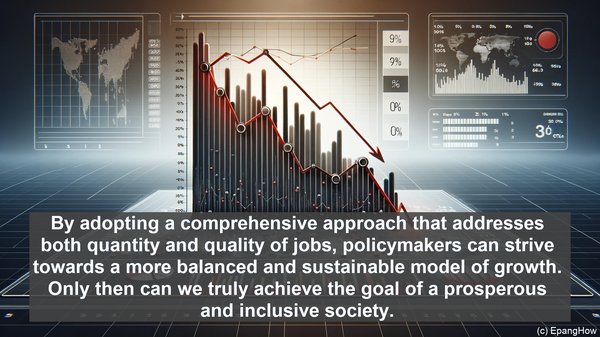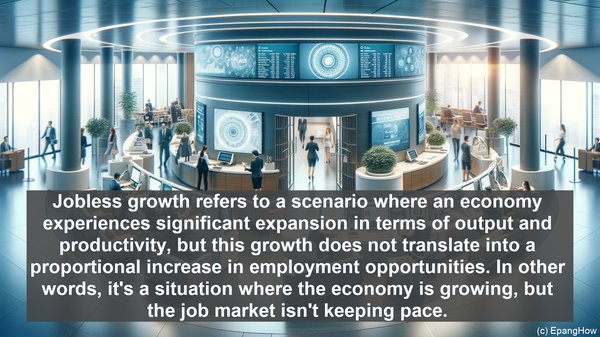Introduction: The Dual Concerns of Economic Growth
Hello everyone! When we talk about economic growth, there are two crucial aspects that often come into focus: job creation and inclusivity. Today, we’ll delve into the difference between jobless growth and inclusive growth, two terms that are frequently discussed in the realm of economics. While both concepts pertain to the overall development of an economy, they have distinct implications and outcomes. So, let’s get started!

Defining Jobless Growth: More Output, Fewer Jobs
Jobless growth refers to a scenario where an economy experiences significant expansion in terms of output and productivity, but this growth does not translate into a proportional increase in employment opportunities. In other words, it’s a situation where the economy is growing, but the job market isn’t keeping pace. This can be attributed to various factors, such as technological advancements, automation, or even certain policy decisions. While jobless growth may indicate overall economic progress, it can also lead to social and political challenges, as unemployment rates remain high.
Understanding Inclusive Growth: A Holistic Approach
Inclusive growth, on the other hand, is a broader concept that encompasses not just economic expansion, but also its equitable distribution across different sections of society. It emphasizes the need to ensure that the benefits of growth reach all segments, including those historically marginalized or disadvantaged. Inclusive growth aims to address not just income disparities, but also gaps in access to education, healthcare, and other essential services. By doing so, it not only promotes social welfare but also contributes to sustainable development in the long run.
Key Differences and Implications
While jobless growth primarily focuses on the quantity of jobs, inclusive growth emphasizes the quality and inclusivity of those jobs. Jobless growth can lead to a rise in unemployment rates, which, in turn, can have far-reaching consequences, such as increased social unrest and reduced consumer spending. In contrast, inclusive growth, by ensuring a more equitable distribution of resources, can help mitigate such challenges. It can also foster a more stable and resilient economy, as it reduces the vulnerability of certain groups and promotes overall social cohesion.
Policy Considerations: Striking the Right Balance
For policymakers, the challenge lies in achieving a balance between these two objectives. While promoting economic growth is essential, it should not come at the cost of exclusion or widening inequality. This requires a multi-faceted approach, which may involve measures like skill development programs, targeted social welfare initiatives, and inclusive policy frameworks. Additionally, fostering an environment that encourages innovation and entrepreneurship can also contribute to both job creation and inclusive growth.

